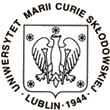

 |
 |
 |
|
Joe Natowitz
TAMU, College Station Coalescence, Caloric Curves, Critical (?) BehaviorJ. Wang, T. Keutgen, R. Wada, K. Hagel, Y. Ma, J.B. Natowitz, M. Murray, and L. Qin For The NIMROD Collaboration The TAMU NIMROD detector, a 4Pi charged particle array inside a 4Pi neutron calorimeter, has been used together with discrete neutron detectors from the Belgian-French DEMON array to study a variety of reactions, among them 35A MeV 64Zn, 40 A MeV 40Ar + 112Sn, 47A MeV 64Zn + 92Mo and 55 A MeV 27Al + 124Sn. Central or near central collisions in these systems lead, after pre-equilibrium emission, to hot nuclei with very similar composite masses and excitation energies. An analysis of the spectra and yields of ejectiles allows separation of products reflecting entrance channel dynamics from those emitted from later stage equilibrated systems. This allows a Ghoshal-experiment-like comparison to be made of these different reaction systems. Coalescence model analyses have been applied to probe dynamical and statistical mechanisms of light cluster and intermediate mass fragment emission and study the impact parameter, excitation energy, mass and isospin dependencies of the dynamic evolution and equilibration processes in these reactions.
| ||
Last modificated: 2003-09-22

